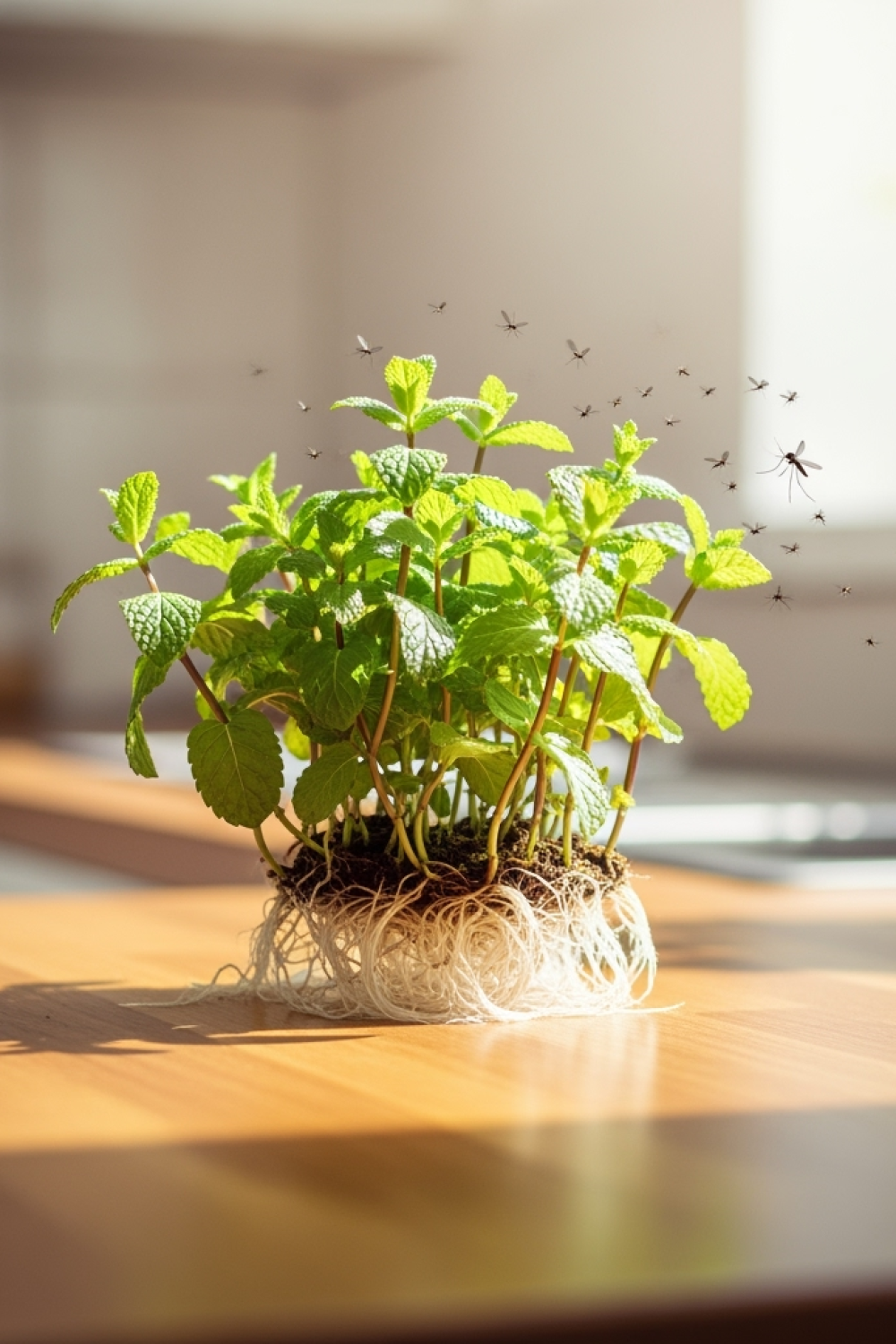Want to save this recipe?
Enter your email below and we’ll send the recipe straight to your inbox!
The Discovery That Transformed My Garden and Home
Have you ever caught a scent that instantly transports you back to childhood memories? For me, it’s the fresh, invigorating fragrance of mint that reminds me of my grandmother’s lemonades during hot summer days. But did you know this aromatic plant can do much more than simply flavor your drinks? Discover why I decided to plant mint throughout my home and how this habit has surprisingly transformed my daily life.
Why Planting Mint Has Become My Favorite Summer Strategy
Mint is much more than just an aromatic herb—it’s a truly versatile ally for your home and garden. This perennial plant, extremely hardy and easy to grow, possesses natural repellent properties against numerous harmful insects while attracting beneficial pollinators like bees and butterflies.
According to a Cornell University study, the essential oils contained in mint, particularly menthol, are especially effective at repelling ants, mosquitoes, and even mice. This is why mint crops were once strategically placed around dwellings in several traditional cultures.
How to Start Growing Mint
The first step is choosing the right varieties. Personally, I primarily use:
- Peppermint (Mentha piperita) for its powerful aroma and repellent properties
- Spearmint (Mentha spicata) for cooking and beverages
- Chocolate mint (Mentha × piperita ‘Chocolate’) near my patio for its surprising fragrance
Start small, with a few plants purchased from a garden center or ask for cuttings from a friend. Mint is so easy to propagate that you’ll quickly have enough plants for your entire property.
Strategic Places to Plant Mint
I’ve discovered that certain locations are particularly effective:
Near doors and windows: To prevent insects from entering the house, I’ve placed pots of mint on windowsills and near entrances. The aroma creates an olfactory barrier that many insects hesitate to cross.
Around the barbecue area: Mint helps keep flies and mosquitoes at bay during your outdoor meals.
In the kitchen: A pot of fresh mint within reach for drinks and cooking, while also deterring ants from exploring your cupboards.
Near damp areas: If you have a pond or an area that usually attracts mosquitoes, mint can significantly reduce their presence.
Common Mistakes to Avoid
Mint has a reputation as an invasive plant, and not without reason. Here’s how to enjoy its benefits without transforming your garden into a mint jungle:
Don’t plant it directly in open ground without restriction: Use pots, buried containers without bottoms, or delimited areas to control its spread. I often use old pierced buckets or recycled containers.
Don’t neglect regular pruning: Without maintenance, mint can quickly become bushy and less effective. Regular trimming stimulates the production of essential oils and keeps plants vigorous.
Don’t forget its water needs: Although resilient, mint prefers cool soil. During hot weather, regular watering will maintain its vigor and fragrance.
Surprising Benefits Beyond Insect Repellent
The strategic use of mint in your environment brings advantages well beyond its anti-insect role:
Health benefits: Breathing mint essential oil can help relieve nasal congestion and even headaches. I often pick a few leaves and crush them between my fingers to enjoy this instant natural remedy.
Significant savings: By reducing the need for chemical insect repellents, I save several dozen dollars each summer. No more need to buy those expensive and potentially toxic sprays!
Positive ecological impact: By promoting a natural solution, you reduce pesticide use and create a healthier environment for yourself, your family, and beneficial wildlife.
Constant culinary resource: Fresh mint within reach for salads, desserts, iced teas, and even impromptu mojitos when friends drop by unexpectedly!
What the Experts Say
Marie Durand, herbalist and permaculture specialist, explains: “Mint is one of the most useful companion plants in an ecological garden. Its strong scent disrupts the olfactory sensors of many pests while attracting beneficial pollinating insects.”
Dr. François Lemieux, entomologist, adds: “The volatile compounds in mint, particularly menthol and carvone, have shown effectiveness comparable to some synthetic repellents against several species of harmful insects, without the negative effects on the environment.”
In Summary: A Simple and Natural Solution at Your Fingertips
Strategically incorporating mint into your environment is probably one of the simplest, most economical, and ecological methods to improve your summer comfort. This wonderful plant combines practical, health, and even gastronomic benefits in a single pot!
So why not start today? A simple mint plant can multiply quickly and become your most precious ally during the hot season. Start modestly with a few pots in strategic locations, and observe for yourself the difference this extraordinary plant can make in your daily life.
Frequently Asked Questions
Does mint work against all insects?
It’s particularly effective against ants, mosquitoes, and certain beetles, but less so against wasps and bees, which are actually beneficial for your garden.
Which mint variety is most effective as a repellent?
Peppermint (Mentha piperita) contains the highest concentration of menthol and generally proves most effective at repelling unwanted insects.
Can I use dried mint rather than fresh?
Fresh mint is significantly more effective because it continuously releases its essential oils into the air. Dried mint retains certain properties but at a much lower level.
How can I prevent mint from taking over my garden?
Grow it in pots or containers, or install rooting barriers sunk at least 12 inches into the soil around planting areas.

